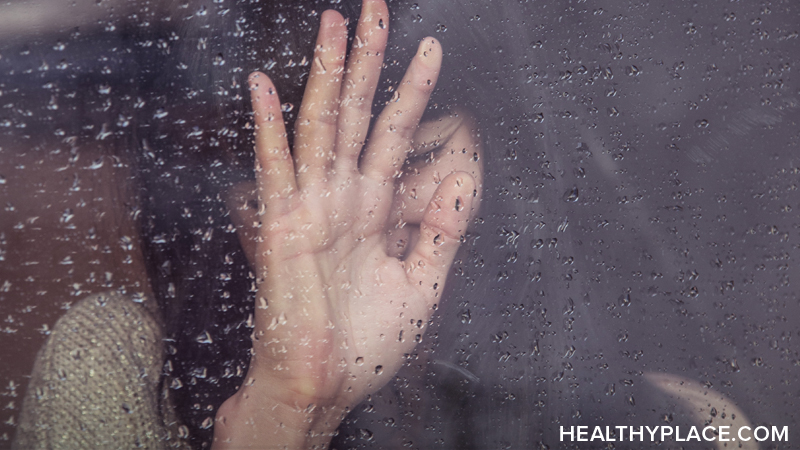Depression and Crying: Why Can’t I Just Stop Crying?

Depression crying is something that is all too familiar for many people living with major depression. Crying so often can be so frustrating that it brings people to (more) tears. Living with this often-debilitating mood disorder can also cause emotional upset and upheaval. Depression crying makes sense, but there may be other reasons for crying than sadness and other strong feelings. Crying just might be one of your body’s ways of coping with depression.
How to Know if Depression is Causing You to Cry
It’s important to note that crying is part of being human and everyone experiences bouts of crying from time to time. Some people are more tearful than others by nature, but that doesn’t automatically point to depression. Signs that crying might be related to depression include:
- Crying without fully knowing why
- Easily crying over little things
- Crying more often or for longer periods than what’s typical for you
- Difficulty stopping your tears once they start
As miserable as it can be, depression crying serves useful functions. Understanding them can help you give yourself, and your tears, a break.
Crying and Depression: Many Reasons You Can’t Stop Crying
Researchers have been studying crying and depression. Some study results are mixed and further studies are necessary, but they are discovering that people cry because it’s a natural act that can play a helpful role in managing depression. Multiple purposes for crying are becoming evident:
- Emotional
- Social
- Cognitive
- Physiological
Emotionally, crying can provide catharsis, a release of pressure and negative energy. This can bring tremendous relief. While it doesn’t eliminate the problem, it does provide someone with an emotional reset and a chance to use other coping or self-care activities. Depression crying is understood to be a form of self-soothing; as such, it regulates emotion, induces a state of calm, and might improve mood. Some studies have found that a high percentage of people benefit from a better mood after crying. Others, though, indicate that less than a third of people with depression felt better after crying. Still, it’s clear that depression crying could potentially lift the mood and lead to a brief reprieve from negative emotions.
Crying with depression also serves a social purpose. In humans, crying can elicit empathy and bring people together. It fosters soothing behavior and deeper connections as people reach out to help and be helped. Crying with others can segue into an opportunity to talk. This does not mean that people with depression use crying for attention. Genuine crying is spontaneous and not chosen. Crying is a helpful form of communication that can bring people together.
Crying even has cognitive effects. It helps the brain think and process by increasing awareness of the thoughts, feelings, and behaviors underlying this mood disorder. This leads to new insights and perspectives that can then be used to forge a pathway out of depression.
Researchers have tentative theories about the physiological benefits of depression crying. It appears that the body flushes out depression-aggravating stress hormones with tears. Crying helps the body in other ways. It:
- Activates the parasympathetic nervous system, nicknamed the “rest and digest” system
- Releases endorphins and enkephalins, the body’s natural pain relievers
- Stimulates the production and secretion of oxytocin, a hormone involved in social bonding and love
- Has detoxifying effects throughout the body
- Releases a protein found in tears called nerve growth factor (NGF), which limited studies have linked to anti-depressant effects—logical given that NGF levels can be lower in people with depression
Ways to Stop Crying with Depression if You Need to Do So
While crying can help depression and the way you feel, there are times when you can’t or don’t want to cry. It’s possible to bring your tears to a halt or prevent them from starting. If you must do so, try these techniques:
- Focus on your breath to pull your mind away from depression’s negative thoughts.
- Inhale slowly, feeling your breath inflate your belly. Hold for a few counts, and then exhale slowly. Repeat.
- Engage in progressive muscle relaxation. Tense and relax the muscles in your face all the way down to your feet. Repeat the process in reverse.
- Think about something random and repetitive, such as a nursery rhyme, a poem, or song lyrics to shift your thoughts and emotions.
- Remove yourself from a bothersome situation by taking a break to walk and breathe.
- Visualize positive images.
Tools such as these can provide a shift so you can gather your thoughts and emotions and be how you need to be. If you need to cry later, in a different space, give yourself permission to do so.
It seems that depression crying is vital. If you have depression and can’t seem to stop crying, your body may be working to help you heal.
APA Reference
Peterson, T.
(2021, December 30). Depression and Crying: Why Can’t I Just Stop Crying?, HealthyPlace. Retrieved
on 2025, December 7 from https://www.healthyplace.com/depression/symptoms/depression-and-crying-why-cant-i-just-stop-crying



